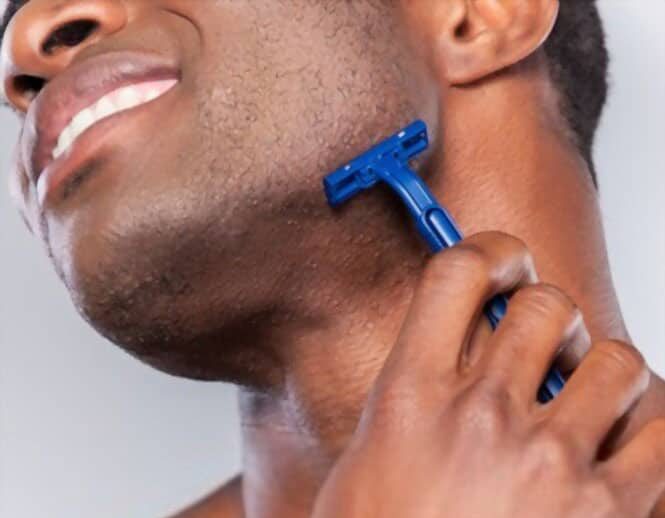Whenever blades come in contact with hair and skin, irksome and pesky razor bumps are likely to make a forced entry; one that will leave you itching for days.
Razor bumps aren’t limited to a certain area. They can emerge as a result of shaving your face, legs, chest, and pretty much any area that has hair follicles. Further, razor bumps occur in both men and women.
Duration-wise, razor bumps and their irritating sequels can last anywhere between mere hours to a few days, depending on their severity, of course. Bear in mind that the more sensitive your skin is, the more it’s susceptible to razor bumps.
But what are razor bumps, exactly? What are their symptoms? And above all, how can we get rid of them and prevent their potential occurrence? We’re about to address all these questions and more in this comprehensive guide about razor bumps, so stick around.
What Are Razor Bumps?
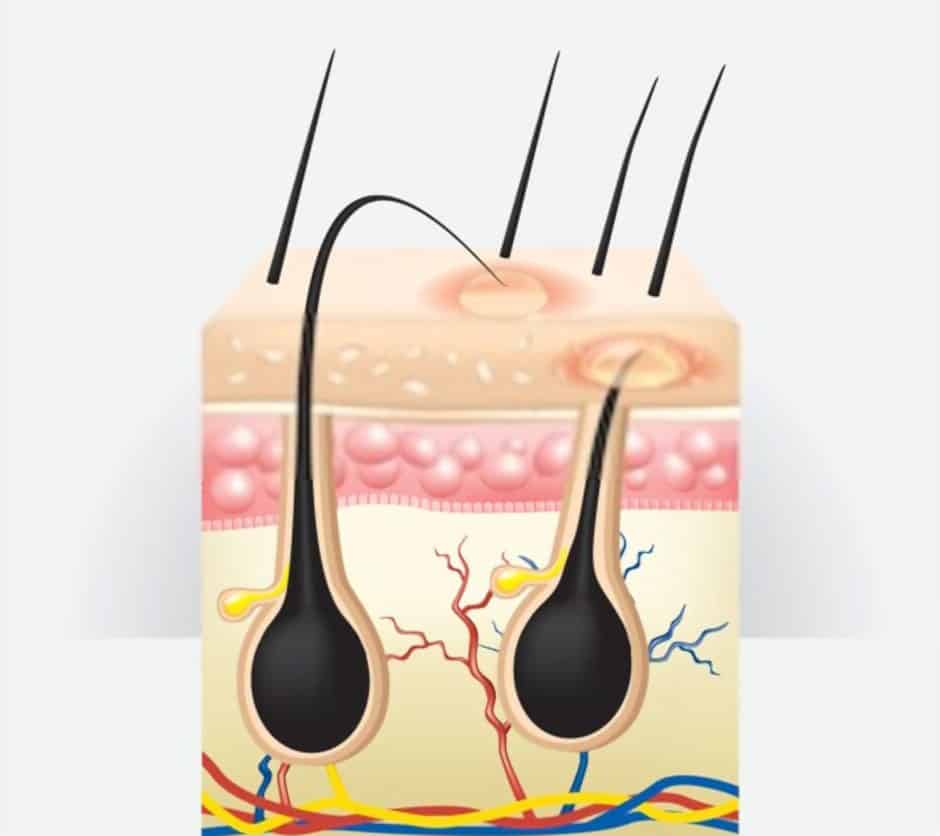
Razor bumps, scientifically known as pseudofolliculitis barbae, is a medical condition where the hair grows back into the skin rather than extrude out of it. The result? The emergence of minute bumps all over the epidermis of the skin.
As stated formerly, this condition is common amongst a lot of people; both male and female. It’s also worth noting that not all cases of pseudofolliculitis barbae are considered serious.
It’s vital to be mindful of the difference between chronic razor bumps from other skin conditions and allergic reactions such as rashes so that you can go about treating your condition correctly, which is why we’ll be covering the symptoms of razor bumps very shortly.
Other Names of Razor Bumps:
- Pseudofolliculitis barbae
- Pseudofolliculitis pubis
- Folliculitis barbae traumatica
- Barber’s itch
- Ingrown hairs
- Shave bumps
What Are the Symptoms of Razor Bumps?
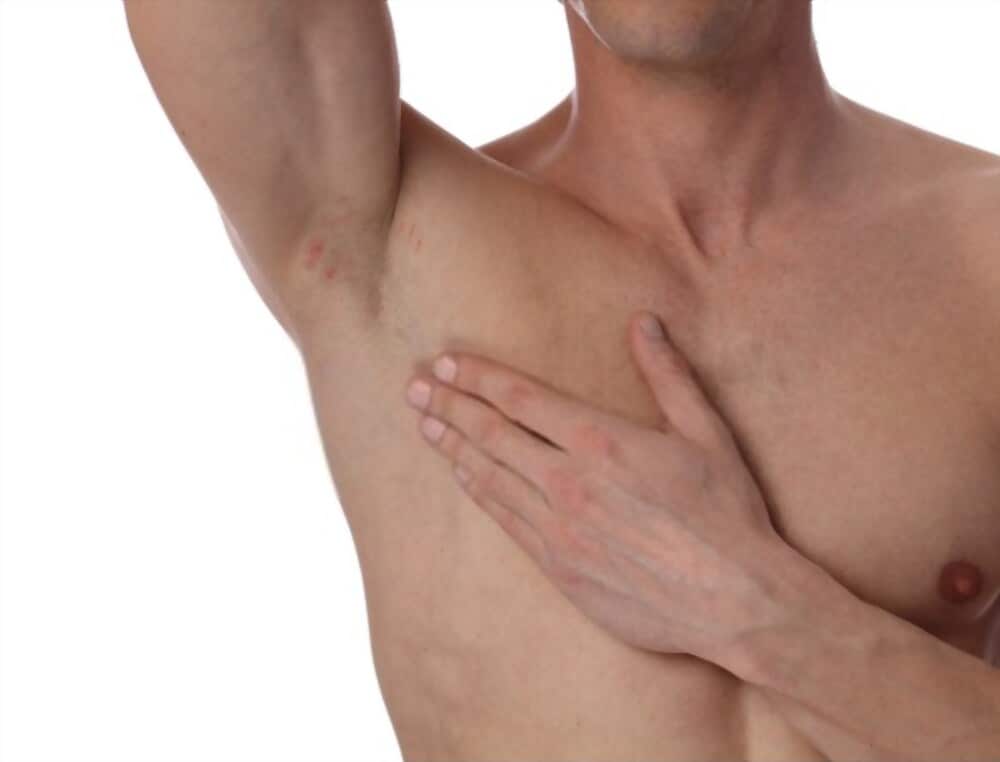
Shave bumps usually occur as a result of shaving body parts that have follicles of hair, the most prominent of which are the beard area, groin, legs, and underarm.
Like many skin conditions, razor bumps are typically identified by the presence of red bumps on the epidermis of the skin. Other accompanying symptoms may include skin darkening, pus-filled lesions, papules, and, of course, itching.
It’s also worth mentioning that razor shaving isn’t the only hair removal method that can result in bumps. You can develop bumps by plucking and waxing. You can also develop them by utilizing chemical hair removal products like a depilatory skin cream.
Diagnosis of Razor Bumps
Diagnosing pseudofolliculitis can be hard to do by yourself since there are other conditions that have very similar symptoms. For example, pseudofolliculitis barbae is often confused with tinea barbae, as both conditions result in an itching sensation.
The notable difference between pseudofolliculitis and tinea is that the latter is a fungal infection, whereas the former isn’t. Does that make a difference in medication? Certainly! In order to treat tinea barbae, you require topical and oral antifungal medications, whereas the average case of pseudofolliculitis barbae can be treated using home-made remedies.
Pseudofolliculitis barbae can also be confused with psychosis barbae, which is another type of bacterial infection, which entails a different treatment from that of pseudofolliculitis.
To ensure optimal diagnosis of shave bumps, physical examination is recommended. You may need magnification, also known as dermatoscopy. Swab may also be taken, but it’s not really a necessity in most cases.
Razor Bumps or STD
Differentiating between razor bumps and STDs (sexually transmitted diseases) isn’t difficult, as there are plenty of telltale signs that you can rely on. Firstly, you want to consider whether your bumps are tender to touch or not. Sensitive bumps that are faintly painful are usually a result of razor bumps. However, when accompanied by body aches, headaches, and fever, you may be dealing with gential herpes.
Next, you want to consider the texture of the bumps. If the bumps are smooth and painless, it’s highly likely that it’s just a harmless skin tag. However, if the bumps are jagged or rough, you’re probably dealing with a genital wart.
Another aspect that’s important to consider when it comes to texture is whether the bumps are opened or closed. Bumps that are closed are usually a result of shaving, pimples, or rashes. If the bumps on your body are opened and scabbed, you ought to get examined for herpes.
Razor Bumps or Razor Burns
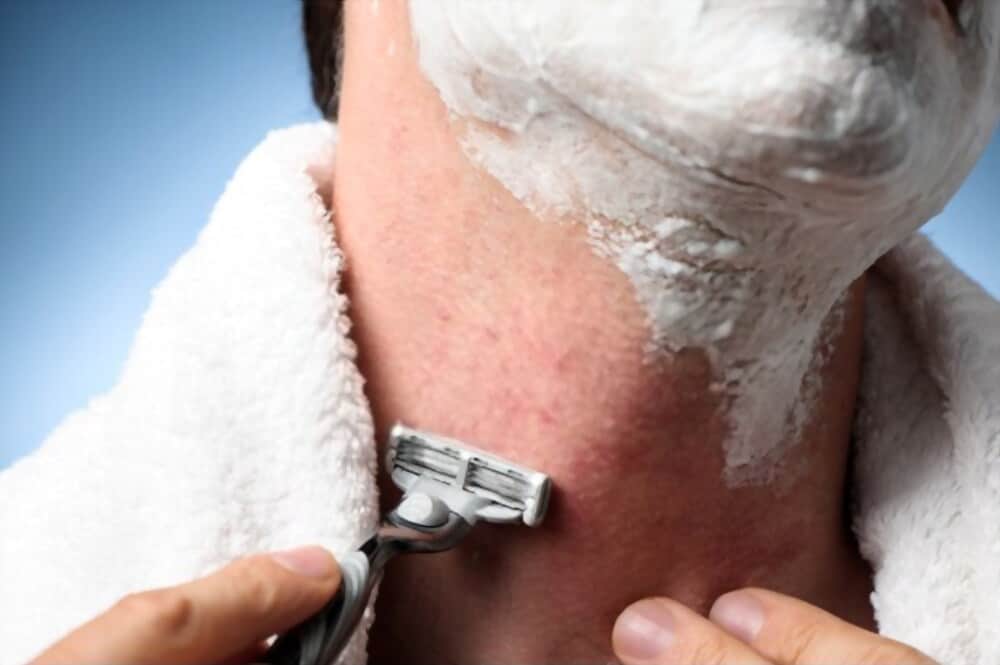
Wait a minute, razor bumps differ from razor burns? Yes. Confusing the two is understandable since both terms are used interchangeably, but they’re two different conditions.
The main difference between the two conditions is that razor burn occurs right after you shave, whereas razor bumps are a result of the shaved hairs growing back into the skin.
It’s challenging to differentiate between razor bumps or razor burns because of how similar the aftereffects are, as both tend to result in inflammation, tenderness, and red rash.
If you have curly hair and you’re experiencing the above-mentioned symptoms, you’re likely to be dealing with shave bumps because your hair is curling back into the skin.
Who Is Likely To Develop Razor Bumps?
There’s really no exception to who can develop razor bumps upon removing hair. However, the condition is most predominant amongst African-American males. To be more accurate, 45-85% of African-American males experience shave bumps. (Check my article about the best electric shavers for black men)
As stated previously, people with curly hair or sensitive skin are also highly susceptible to razor bumps. Once again, shave bumps aren’t limited to males; females can develop them as well.
Why Do Razor Bumps Occur?
Razor bumps are developed primarily due to the inability of hair to grow out of the follicles. This is especially true with people that have curly hair. Dr. Cynthia Abbott, one of the most illustrious dermatologists in Atlanta Georgia, explains everything by stating that rather than growing out of the follicle, the hair curls back inside the pore, as it’s met with resistance from dead skin cells.
How to Get Rid of Razor Bumps?
There are numerous ways you can go about getting rid of razor bumps, from easy-made home remedies to professional-grade treatment options. The following paragraphs help shed light on some of the best treatment methods that you can resort to.
Home Remedies
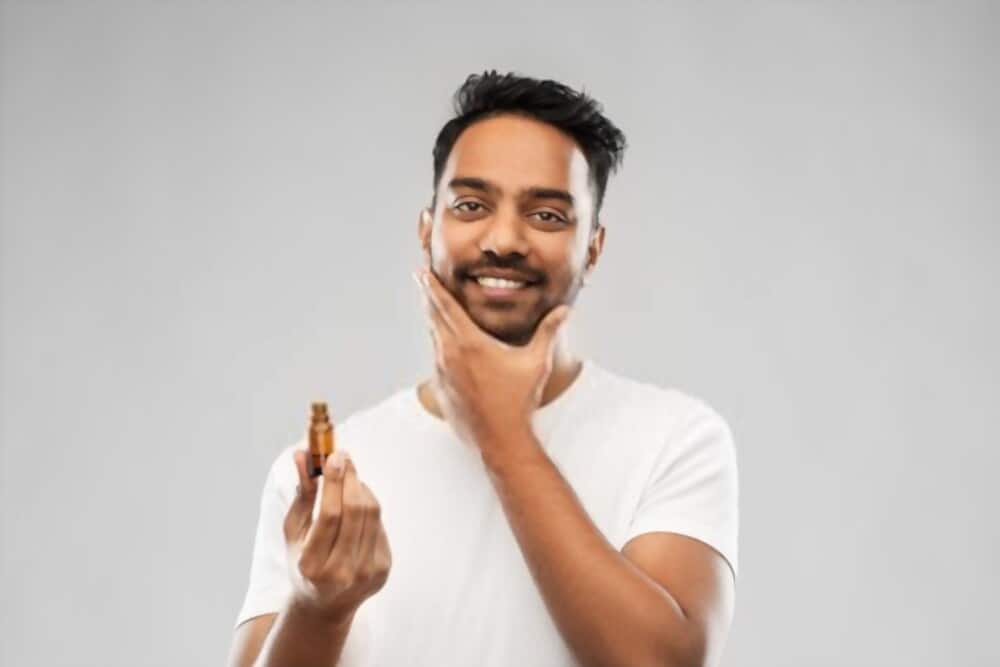
- Tea Tree Oil – The first home remedy you should try if you’re struggling with razor burns is tea tree oil, as it serves as an anti-inflammatory and doubles as an antimicrobial. You can mix it with a carrier oil like coconut or sweet almond oil. Ideally, you want to use 1-3 drops of tea tree extract for every teaspoon of carrier oil. Click here to learn more.
- Aloe Vera – According to a study conducted in 2007, aloe vera has been proven to have the potential to heal first and second-degree burns. Applying a thin layer of genuine aloe vera gel on the skin will help alleviate the itching sensation of razor bumps. You can buy pure aloe vera gel from your local pharmacy.
- Tweezing – Like we already established, shave bumps are typically a result of curly hair growing back into the skin rather than out of it. Tweezing out the stuck hair can help you get rid of the shave bump on your face. This method is ideal if you’re dealing with one or two bumps. Make sure the hair is clearly visible before trying to tweeze it.
- Coconut Oil – One of the most versatile oils out there is coconut oil, as it can be utilized in various applications, including the treatment of burns. Coconut oil is great for the skin, in general, as it offers antiseptic and anti-inflammatory properties. This 2008 study does an excellent job of covering the effects of coconut oil as a natural skin therapy remedy.
- Witch Hazel – Featuring outstanding anti-inflammatory and astringent properties, witch hazel is among the best natural remedies for soothing skin irritation and burns. If you’re going to use witch hazel, make sure to apply a slight portion of it on a cotton pad rather than directly on the skin. Click here to learn more about the properties of witch hazel.
- Exfoliating Scrub – Another optimal way of eliminating razor bumps is exfoliation. How so? Well, ingrown hair is generally resisted by dead skin, and exfoliating helps eliminate dead skin cells, which unclogs the pores and allows the hair to protrude. If you don’t like using unnatural products, mix olive oil and sugar together to create your own scrub.
- Skin Brushing – Skin brushing is a lot similar to skin exfoliation, as it helps loosen and remove dead skin cells. This helps eliminate the resistance that’s blocking ingrown hair from protruding outwards. You want to use a firm and bristled brush for this process.
- Warm Washcloth – Applying a warm washcloth over your skin is another excellent way to exfoliate and shed dead skin cells. The warmth emitted from the cloth helps unclog the pores, allowing trapped hair to protrude out of the skin. For optimal results, mix tea tree oil (10-15 drops) in a bowl of warm water before soaking the washcloth.
Treatment Options
If you’re experiencing a somewhat severe case of razor bumps where the bumps look inflamed and refuse to subside using home-made remedies, you ought to try a topical steroid cream.
It’s best to use a hydrocortisone cream: a topical steroid that aids in reducing inflammation and irritation. You can find numerous low-strength formulas that don’t require a prescription.
It’s very important that you use hydrocortisone creams as directed by your dermatologist or the manufacturer. Generally speaking, low-strength formulas are applied once or twice a day.
If you’ve been using a hydrocortisone cream for 2-3 days without any notable improvement, it’s highly recommended that you discontinue using the cream and refer to your dermatologist.
Apart from over-the-counter steroid creams, there are other professional treatment options that you should consider, such as prescription antibacterial lotions and warm compressed via green tea bags. Sometimes it’s necessary to resort to extraction or sterile incision, so be sure to refer to your dermatologist before using any professional-grade treatment approach.
How to Prevent Razor Bumps From Occurring?
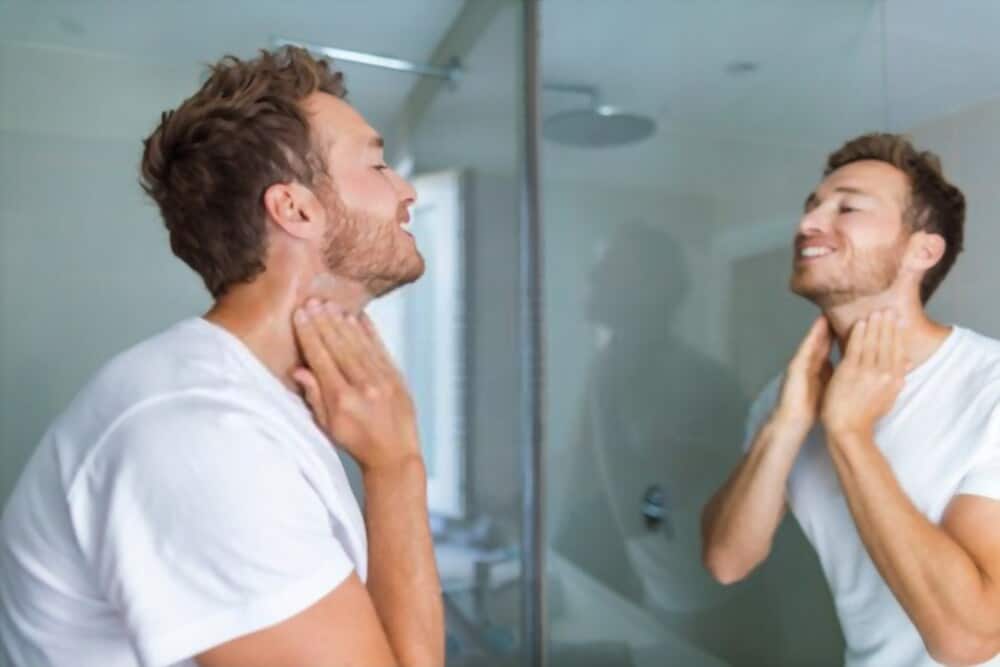
Now that you’re aware of the different methods that you can use to get rid of razor bumps, let’s look at the precautionary measures that you ought to adopt to prevent the potential emergence of razor bumps.
- Use an Electric Razor – Electric razors are better than manual razors in the sense that they force the hairs up before cutting them by rolling up the skin, which means that you don’t have to go over the same area as often as you would if you were to use a manual razor. This helps reduce the risk of razor bumps.
- Retinoid Products – The regular use of a retinol product prevents the emergence of ace and it helps reduce dark spots and wrinkles. Further, retinoids increase cell turnover and lessen the production of oil, which helps keep the pores unclogged.
- Proper Preparation – If you’re going to shave using a manual razor, be sure to prepare first by lathering up with a high-quality, non-irritating shaving gel/cream and warming up the area you’re about to shave with a warm washcloth to soften the hair. To add, experts recommend exfoliating before shaving.
- Try Other Hair Removal Methods – If your experiences with razor shaving are typically negative, you ought to try different hair removal methods such as waxing, epilation, and laser.
- Avoid Shaving Too Closely – Shaving too close to the skin promotes ingrown hairs and razor bumps, so be sure to avoid it.
- Don’t Shave Against the Grain – Shaving against the grain also promotes irritation and razor bumps, so make sure to shave with the grain. Keep in mind, however, that shaving with the grain will force you to carry out multiple passes with the blade.
- Non-Irritating Shaving Cream – There are plenty of cheap shaving creams available on the market that contain harsh components that are irritating to the skin. Be sure to invest in a shaving cream that’s completely or mostly natural.
- Don’t Pull the Skin While Shaving – Avoid pulling at the skin while shaving because it’s going to cause razor burn/bumps. Additionally, pulling at the skin will make the hair snap back into the skin, causing skin irritation.
- Don’t Shave Too Often – If you’re struggling with razor burns/bumps, you should reduce the frequency at which you shave.
- Use a Fresh Razor – Razor blades tend to get duller with use, and so using an old razor will increase the chances of cutting yourself and getting razor bumps. Be sure to change your razor on a regular basis.
- Exfoliate to Clear Your Pores – Exfoliating is one of the best things you can do to keep your skin looking healthy. You can exfoliate with a retinoid product, glycolic acid, salicylic acid, benzoyl peroxide, or other means of skin exfoliation.
Do Other Hair Removal Methods Cause Razor Bumps?
The development of razor bumps isn’t limited to razor shaving. Razor bumps can be developed by other hair removal methods such as waxing, plucking, and the use of chemical products.
However, razor shaving is the most prominent hair removal method associated with developing bumps and skin irritation. Does that mean you should totally stop using a razor for shaving? No. You can still shave using razor blades, but you’ll have to take preventative measures to reduce the risk of developing after-shave razor bumps.
How to Remove the Hair Yourself
We’ve already established that a razor bump is a result of hair getting stuck inside the follicle, so it makes sense that in order to eliminate the bump, you have to get rid of the hair that’s inside of it. Of course, this isn’t the only way to go about getting rid of razor bumps, but it comes in handy when dealing with one or two bumps.
- First and foremost, make sure the hair is visible. If not, give it time to protrude out of the bump so that you can remove it without causing any friction or irritation.
- Assuming the hair is clearly visible, you want to grab a tweezer for the removal process. Make sure the tweezer is disinfected with the aid of soap and hot water.
- Afterward, you need to apply pressure onto the skin so that the hair protrudes as much as possible. Be gentle so that you don’t cause any complications.
- If the razor bump isn’t breaking open and allowing for optimal protrusion, get a physical scrub and apply it gently on the skin until the hair shaft protrudes properly.
- Subsequently, grab the tweezers and attempt to remove the hair. When doing so, make sure to pluck upwards rather than outwards, as it allows for easier hair removal. Further, try plucking as close as possible to the root of the hair.
- After removing the hair, you want to utilize an alcohol-free aftershave or toner to disinfect the area. Also, consider using a moisturizing cream. Make sure to wait until everything is healed up properly before attempting to shave again.
When to See a Dermatologist?

If you’re confident that what you’re experiencing is shave bumps, there’s no need to hurry to see your dermatologist right away. Give it time to heal after using some of the treatments highlighted in this article.
If the case persists and refuses to subside or if you’re unable to tweeze an ingrown hair that just won’t protrude, then it’s time to visit your dermatologist.
Speaking of trying to pluck ingrown hair, you need to steer clear of trying to dig deep into bumps with your tweezers. If you can’t remove the visible hair in one or two attempts, cease trying. Just wait for the hair to protrude even more so that it’s easier to pluck it. And as stated formerly, if the hair isn’t visible, to begin with, DO NOT try to pluck it.
Dermatologists use a wide range of approaches to eliminate the presence of shave bumps, from prescription remedies to safe extractions. So, if you’re incapable of dealing with shave bumps, a dermatologist can definitely help.
In Conclusion
Razor bumps might be irritating and unpleasant to look at, but with simple adjustments and ideal skin treatment, they can be alleviated in no time. If none of the treatment methods highlighted in this guide has helped you overcome your case of razor bumps, we strongly recommend seeking professional help from your dermatologist.

I’m really passionate about shaving and grooming. I shave my friends’ hair as a hobby and totally enjoying my time writing about shavers and razors. My main job? Ok, I’m a pharmacist!
